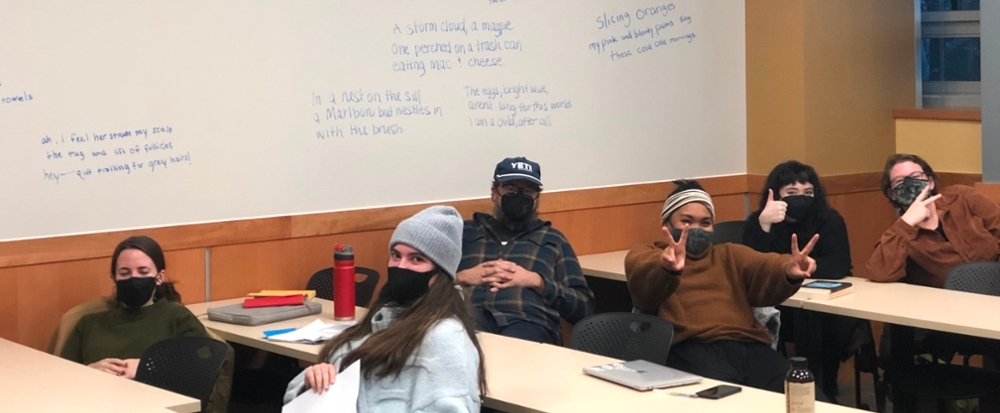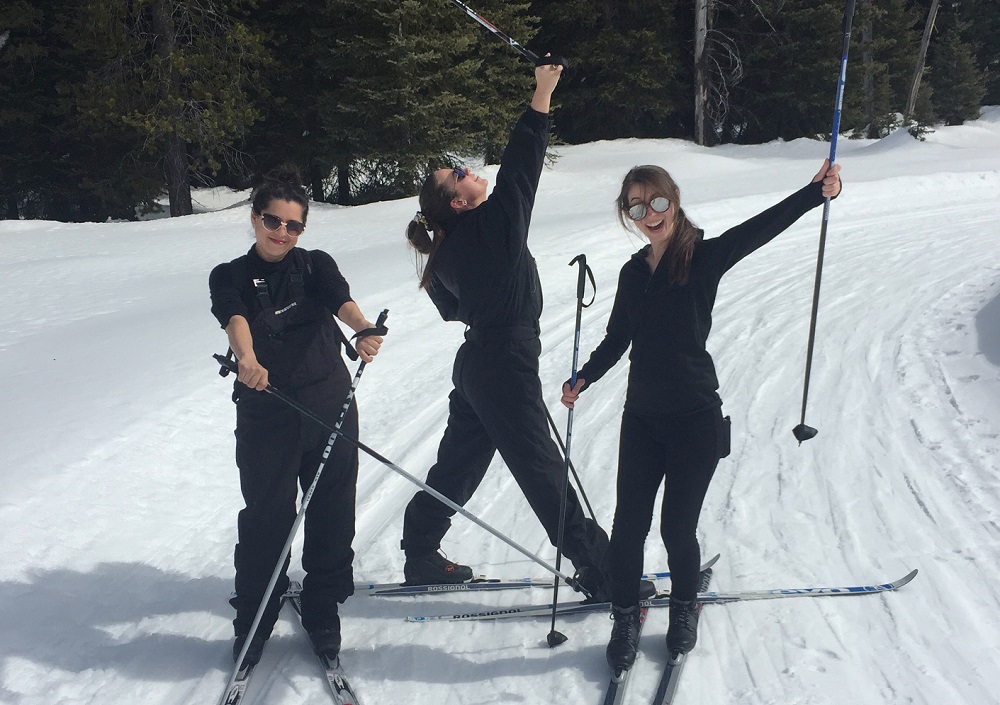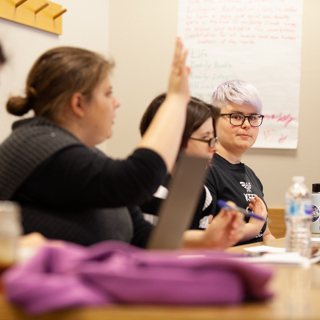Frequently Asked Questions

MFA Creative Writing
The total number of students varies from year to year but generally ranges between forty and fifty students. That number includes first-year, second-year and third-year students in prose and poetry.
Unlike some graduate programs which admit a small number of students and wait-lists the rest until the first have responded, we feel the students we want to enroll should know of their acceptance as soon as possible after the January deadline. For that reason, we admit twenty students in fiction, ten in nonfiction, and twenty in poetry out of the several hundred applications we receive each year. If the pool is particularly strong, we will sometimes create a short waiting list and inform those on it. Students generally know if they have been accepted here by mid-March. We expect about half the people we admit to choose our program, and it has tended to work out that way.
The application process is open between October 1 and January 6. The sooner you apply, though, the more time your recommenders will have to submit their letters of recommendation. We will accept letters of recommendation as late as January 21.
We currently have enough teaching assistantships to offer them to about half the people we enroll. For this reason, we do have to rank incoming students to determine who will first be offered these stipends. This is the most difficult, and imperfect, part of our acceptance procedure. To be considered for a teaching assistantship, you must be fully admitted to the Graduate School and submit an expository essay with the application.
A teaching assistantship is a contract for employment with definite requirements and obligations. You will be asked to teach one section of freshman composition per semester. In the second year, some of our T.A.'s teach creative writing. You're responsible for your own class of 22 students but will get plenty of training and help from the composition directors. In return, you will receive a stipend and a tuition waiver. There are registration fees and health insurance costs which you will be responsible for each semester. T.A.'s are offered on a yearly basis, but we almost always renew our students who come in on assistantships.
We award one Truman Capote Fellowship in prose every year. This is a two-year fellowship that includes a tuition waiver plus a stipend. Teaching is not required.
The cost for a semester at UM depends on your residency: in-state tuition is substantially cheaper than out-of-state tuition. There are also student health insurance fees to consider. Some out-of-state, unfunded students come to UM part-time for their first year while gaining residency. This usually makes our 2-year program 2.5 or 3 years. We do have a variety of scholarships and fellowships which we offer to our unfunded students; these range from $800 - $5000. We also offer the opportunity to become the CutBank Editor, a fully-funded position, in your second year.
All the parts of your application are read by several faculty members in your area of emphasis. However, the most important, initially, is the writing sample. First decisions are based almost entirely on that sample. For this reason, you should include work you not only feel is your best but which represents the kind of writing you want to be doing here.
We hope not. Our faculty have widely divergent tastes and sensibilities. All tend to agree that what they're most looking for in an applicant's work is "promise"--difficult to quantify but likely to include an original voice, a facility with language, a sharp eye, something to say.
Generally not. Since we have some applicants to the program who have studied here as undergraduates, we try very hard to put everyone on equal footing by making decisions based on what you've put in your application packet. Having met a professor won't change that. A better reason for a campus visit is to help you decide if you want to choose us. If you've never been to Montana, a visit might help you decide if you want to apply. The best time to visit, in our opinion, is after we've accepted you and you're trying to decide between ours and another program. Then you can meet students who would be your classmates, as well as get a sense of the faculty and the place, so you can make an informed decision.
They're capped at fifteen, but generally range in the area of seven to twelve students.
The University of Montana MFA program has a two-step application process. The first step is to apply to the Graduate School and submit a $60 fee. The second step is to submit the additional materials Required by the MFA program to the Graduate School Application Portal. You can find the list of additional materials on the MFA APPLICATION page.
Yes, you may apply for two genres. You will need to fill out two MFA genre applications. Only apply to the Graduate School once, though. The Graduate School needs you to designate a genre, so just choose your preferred genre. If you end up coming in a different genre, we can change that later.
January 6 each year.

